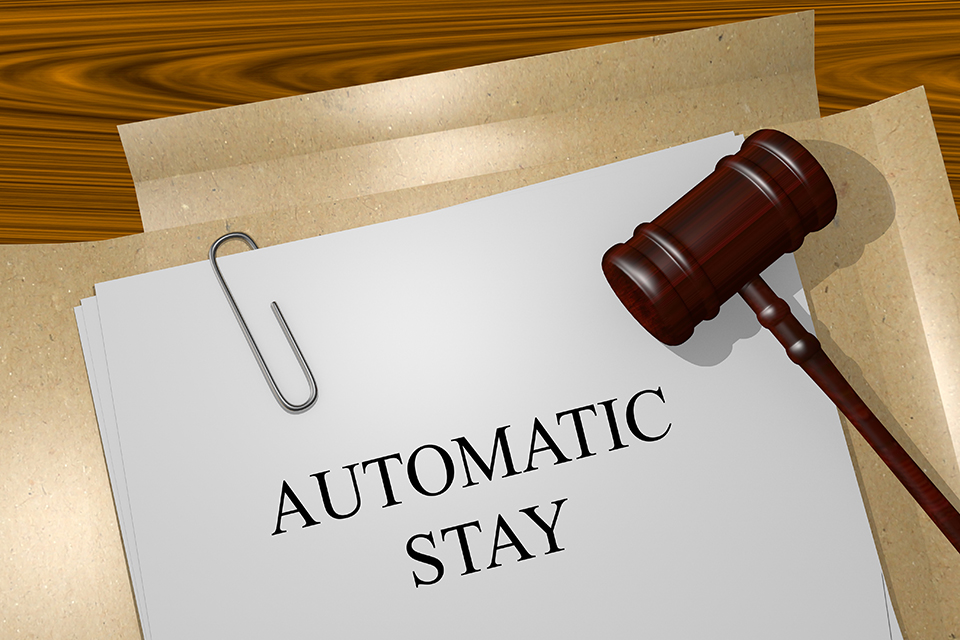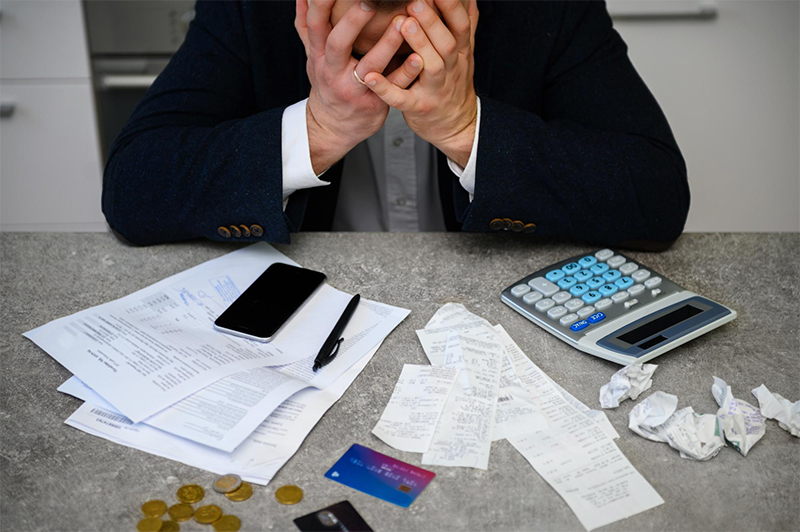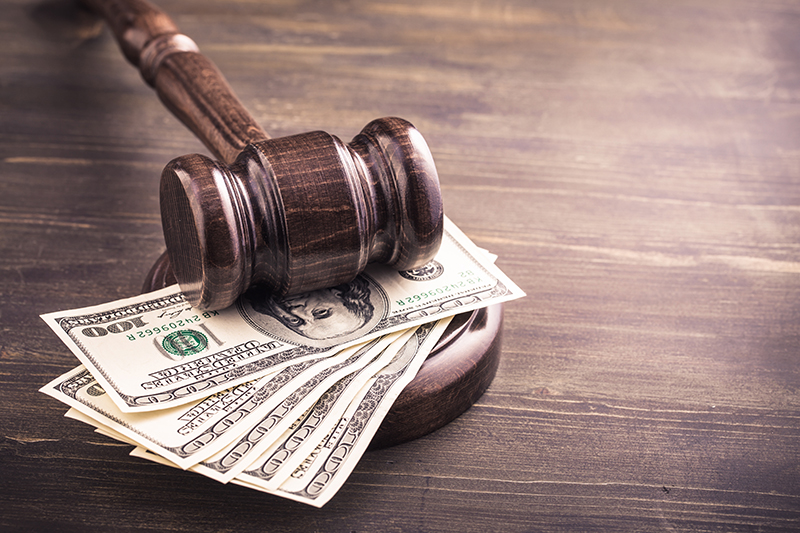What is an Automatic Stay?
An automatic stay is a powerful legal tool that provides immediate relief to individuals and businesses facing overwhelming debt and financial troubles.
Under United States bankruptcy law, an automatic stay immediately halts all collection actions, including foreclosures, repossessions, lawsuits, garnishments, and creditor harassment. [1]
This protection goes into effect as soon as a bankruptcy petition is filed, giving the debtor a crucial breathing space to reorganize their financial affairs and work towards a fresh start.
The automatic stay helps to provide a sense of calm for debtors in a time of crisis and allows them to focus on restructuring their debts under the guidance of the bankruptcy court.
Understanding the protections and limitations of an automatic stay is essential for anyone considering filing for bankruptcy or dealing with mounting debts.

History of the Automatic Stay
The automatic stay was first implemented as part of the Bankruptcy Reform Act of 1978.
This provision immediately halts any creditor action to collect debts once a bankruptcy case is filed, providing debtors with relief and protection while their financial affairs are being reorganized.
Over time, the automatic stay has undergone amendments to better serve the interests of both debtors and creditors.
The significance of the automatic stay lies in its ability to provide debtors with a breathing space to reorganize their finances and develop a repayment plan, without the constant pressure of creditor collection efforts. It also ensures that all creditors are treated fairly and equally in the bankruptcy process.
Numerous court cases and legislative actions have shaped the application of the automatic stay, establishing precedents and clarifying its scope and limitations.
These include cases such as Midlantic National Bank v. New Jersey Department of Environmental Protection, which addressed the enforcement of governmental actions during the automatic stay, and legislative amendments like the Bankruptcy Abuse Prevention and Consumer Protection Act of 2005, which introduced changes to the duration and applicability of the automatic stay.
Understanding the Automatic Stay
When filing for bankruptcy, individuals and businesses alike may benefit from the legal protection provided by the automatic stay.
This important provision immediately prohibits most creditors from taking any action to collect debts, allowing the filer a period of relief to reorganize their finances.
Understanding the automatic stay is essential for anyone considering or navigating the bankruptcy process, as it can impact various aspects of their financial situation. This includes:
- Halting foreclosure proceedings
- Preventing creditor harassment
- Stopping wage garnishments
Debtors must comprehend how the automatic stay works and its limitations to make informed decisions and effectively manage the bankruptcy process.

Who Does the Automatic Stay Protect?
The automatic stay provides immediate protection to debtors filing for bankruptcy. It does this by halting all collection actions and lawsuits from creditors, including repossession of property, foreclosure, and more. It applies to individuals and businesses seeking relief from their overwhelming debts.
Different types of bankruptcy, such as Chapter 7, Chapter 11, and Chapter 13, all trigger the automatic stay, offering debtors a reprieve from creditor actions while they work to reorganize or discharge their debts.
The stay remains in place until the bankruptcy case is resolved or the court orders otherwise. Various types of creditors and entities are affected by the automatic stay, including:
- Government agencies
- Landlords
- Secured and unsecured creditors
- Utility companies
The stay prevents them from taking any further action to collect on debts owed to them by the debtor.
For individuals filing for bankruptcy, the automatic stay provides specific forms of relief, including the opportunity to catch up on mortgage payments, prevent eviction, stop utility disconnections, and alleviate the stress of constant creditor harassment.
Exceptions to the Automatic Stay
The two exceptions to the automatic stay are for repeat bankruptcy filers and for certain actions related to prior bankruptcy cases dismissed.
1. For repeat bankruptcy filers, the automatic stay may not be in effect if the individual had one or more bankruptcy cases pending within the year before the current filing.
In these cases, the automatic stay may not come into effect or may be limited in duration, depending on the circumstances.
2. The second exception applies to individuals who had a prior bankruptcy case dismissed within the past year.
In such cases, the automatic stay may not be granted or may be limited, especially if the dismissal was due to the debtor’s willful failure to abide by court orders or failure to appear in court.
These exceptions are intended to prevent abuse of the bankruptcy process and ensure that individuals who are repeatedly filing for bankruptcy or who have had a case dismissed for noncompliance with court orders are not able to unduly delay or hinder the rights of creditors.
It is important to note that the automatic stay can also be lifted or modified for specific actions related to foreclosures, Chapter 7 means test, or Chapter 13 proceedings.

Advantages and Disadvantages of the Automatic Stay
The automatic stay is a powerful tool in bankruptcy proceedings that provides immediate relief to debtors by stopping creditors from taking any further collection actions.
The automatic stay also gives debtors a chance to reorganize their finances and develop a plan to repay their debts.
However, there are also some disadvantages to the automatic stay. For example, it may only offer temporary relief and does not guarantee a long-term solution to financial difficulties.
Some creditors may seek relief from the automatic stay or argue that it should not apply to certain debts.
Advantages of the Automatic Stay
The automatic stay provides several advantages for debtors seeking relief from their financial obligations.
One of the key benefits is that it temporarily prevents creditors from collecting debts, which allows debtors to work out their finances without the added pressure of ongoing collection efforts.
This can provide a sense of relief and breathing room for debtors to reorganize their financial affairs.
Both Chapter 7 and Chapter 13 bankruptcies allow for an automatic stay. In Chapter 7, the automatic stay halts collection actions by most creditors, including credit card companies, medical providers, and landlords.
In Chapter 13, the automatic stay also applies to these types of creditors, as well as government agencies or departments seeking to collect on debts, such as the IRS or state tax authorities.

Disadvantages of the Automatic Stay
The automatic stay, while providing relief to debtors, can also pose disadvantages to creditors. One major drawback is that it can delay the collection of debts, potentially harming creditors by prolonging the time it takes to recover their money.
This delay can also result in added costs and legal fees for creditors. The automatic stay can impact secured creditors by preventing them from repossessing or foreclosing on collateral, potentially reducing their ability to recover their debt.
Another disadvantage is the potential for abuse by debtors, who may use the automatic stay as a strategy to delay or avoid their debt obligations.
The automatic stay can prevent the collection of certain debts, such as alimony and child support, causing financial strain on the recipient of these payments.
This limitation can hinder the ability of those entitled to these payments to meet their basic needs, posing a significant disadvantage to them.
Enforcement and Violation of the Automatic Stay
The automatic stay is a powerful tool provided by the bankruptcy code that protects debtors from aggressive collection actions by creditors.
Understanding these aspects of the automatic stay is crucial for both debtors and creditors involved in a bankruptcy case, and can help ensure that the process is carried out fairly and effectively.
Enforcement of the Automatic Stay
To enforce the automatic stay, the debtor or their attorney must ensure that all creditors, collection agencies, and government departments are notified of the bankruptcy filing.
This can be done by sending a formal notice of the bankruptcy filing, including the case number and details of the automatic stay, to all known creditors. It is also important to keep records of these notifications for documentation purposes.
If a creditor or collection agency continues to contact the debtor for debt repayment, it is necessary to document the violations of the automatic stay.
This documentation should include details of the contact, such as the date, time, and nature of the communication. Any written correspondence or evidence of collection attempts should be retained as evidence.
To report violations of the automatic stay, the debtor or their attorney can file a motion with the bankruptcy court.
This motion should include the documented evidence of the violations and request appropriate action to enforce the automatic stay and protect the debtor from further creditor harassment.
By following these steps, the automatic stay can be effectively enforced to provide the debtor with the necessary protection during the bankruptcy process.
Violation of the Automatic Stay
The automatic stay is a fundamental protection for debtors in the bankruptcy process, preventing creditors from taking any collection actions against the debtor or the debtor’s property.
Violating the automatic stay can have severe consequences and repercussions. If a creditor intentionally violates the automatic stay, they can face:
- Contempt of court
- Fines
- Penalties

The court may also order the creditor to compensate the debtor for any damages resulting from the violation.
Accidental violations also carry repercussions, as the court may still impose sanctions and require the creditor to compensate the debtor for any harm caused.
In cases of willful violations, debtors can seek sanctions and attorney fees by filing a motion with the bankruptcy court.
The court will then review the motion and, if it finds that the violation was indeed willful, may award the debtor with damages, attorney fees, and other costs incurred due to the violation.
If you are interested in filing for bankruptcy, our experienced bankruptcy attorneys at Frego Law can help. Contact us today for a free consultation.
Source
[1] Kagan, J. (2023, April 26). Automatic Stay: What it is, How it Works, Example. Investopedia. https://www.investopedia.com/terms/a/automaticstay.asp




